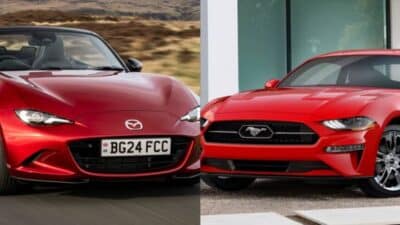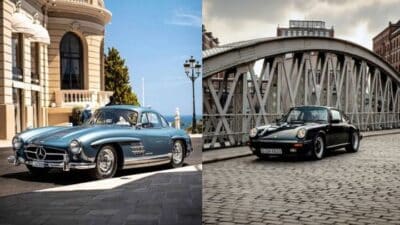Ever stopped to really think about the lights on your car? Most of us just flick them on and off, expecting them to do their job – show us the way and let others know where we are. But there’s a whole universe beyond that simple interaction, a fascinating realm known as automotive lighting design. It’s not just about bulbs and wires; it’s a brilliant fusion of cutting-edge technology, stringent safety requirements, and dazzling aesthetics that helps define a vehicle’s personality. From the moment you glance at a car’s “eyes” to the way its tail lights leave a glowing signature in the dark, every flicker and beam is a carefully orchestrated design decision. So, buckle up, because we’re about to take a casual deep dive into how these illuminating elements are crafted, what makes them tick, and why they’re so much more than just sources of light.
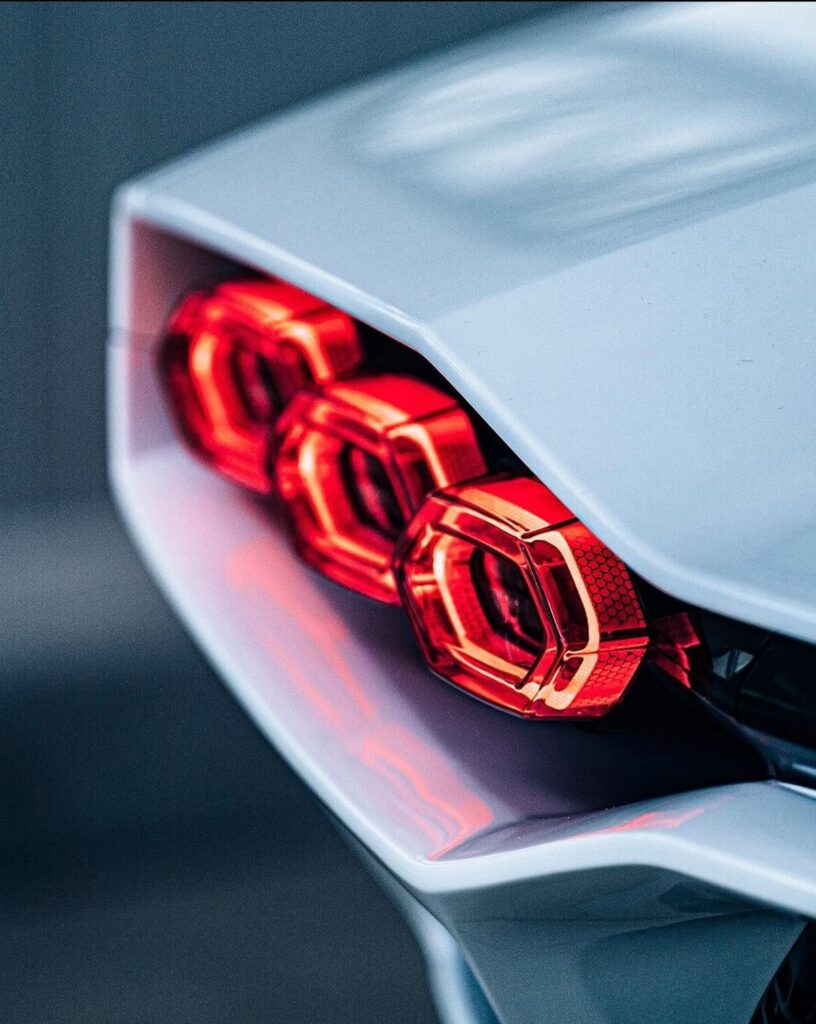
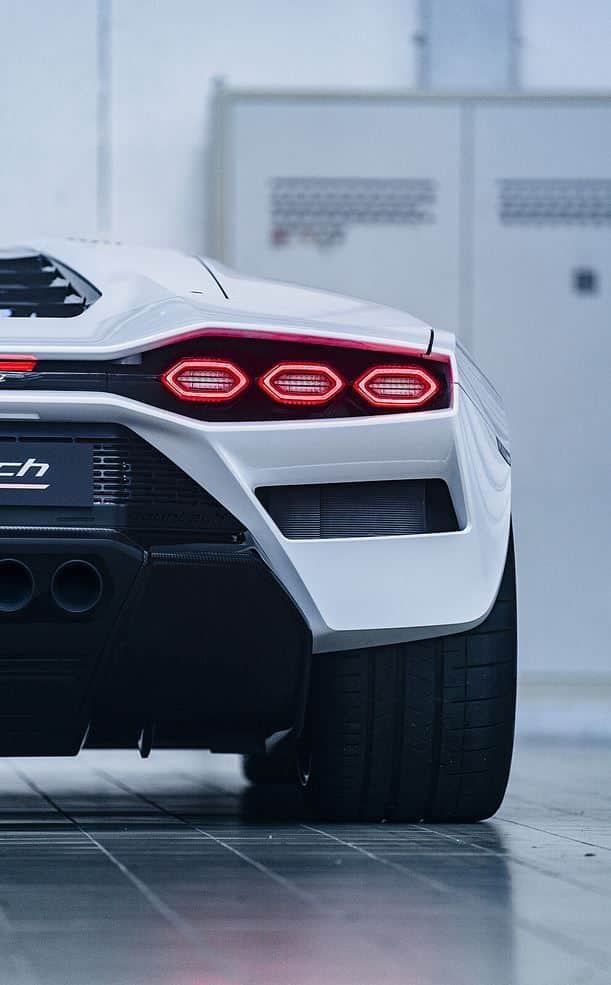
More Than Just Bulbs: The Evolution of Automotive Lighting
Remember the good old days? Back when car lights were pretty much just round, sealed-beam units, maybe with a yellow tint? We’ve come a long, long way since then. What started as simple incandescent bulbs, designed purely for basic illumination, has transformed into sophisticated, intelligent light systems that are a cornerstone of modern vehicle design and safety.
The journey began with those simple, filament-based bulbs, which were effective but limited in their light output and energy efficiency. Then came halogen bulbs, offering a brighter, whiter light and becoming the standard for decades. They were a significant step forward, making night driving much safer and more comfortable.
But the real revolution kicked off with High-Intensity Discharge (HID) or Xenon lights. These weren’t just brighter; they produced a distinctive bluish-white light that immediately made cars look more premium and modern. Suddenly, headlamps weren’t just functional; they were a style statement. They offered superior illumination, especially for long-range visibility, but came with complexities like ballasts and slower warm-up times.
Then, light-emitting diodes, or LEDs, truly changed the game. Compact, incredibly energy-efficient, long-lasting, and capable of producing almost any color, LEDs offered designers unprecedented freedom. They allowed for intricate shapes, thin light strips, and signature daytime running lights (DRLs) that became instant brand identifiers. Think of those sleek “eyelid” DRLs or segmented tail lights – that’s all thanks to LED technology. The flexibility of LEDs meant lights could now seamlessly integrate into the car’s overall aerodynamic and aesthetic flow, rather than being clunky add-ons.
Today, we’re seeing even more advanced technologies emerge. Matrix LED systems can selectively dim or brighten individual LEDs to create dynamic light patterns, effectively providing high-beam illumination without blinding oncoming traffic. Organic Light Emitting Diodes (OLEDs) are ultra-thin and flexible, opening up possibilities for unique 3D lighting effects and animated signals. And then there are laser headlights, which offer incredible range and precision, pushing the boundaries of what’s possible in terms of forward illumination. Each technological leap not only enhances safety and efficiency but also gives designers a richer palette to craft truly distinctive and compelling automotive identities.

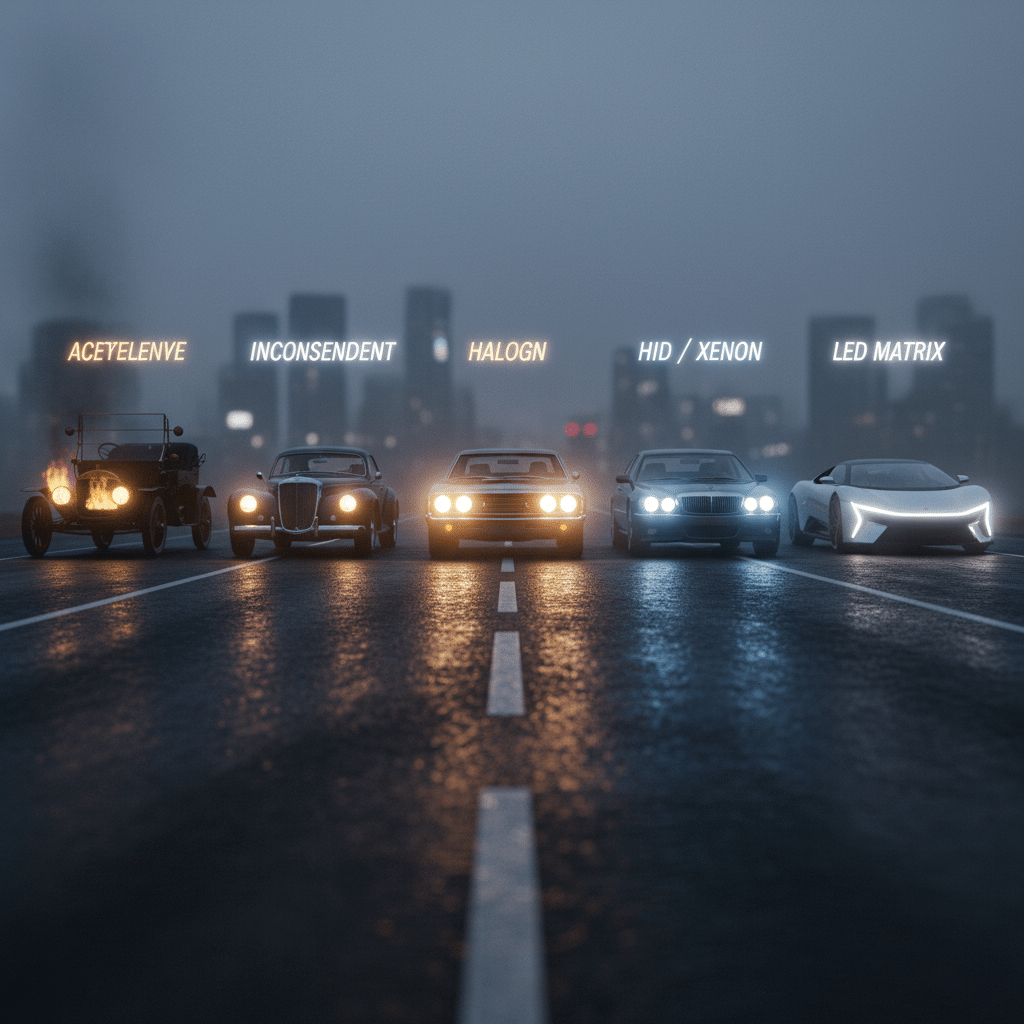
Safety First: How Lighting Keeps Us Safe
When we talk about automotive lighting, safety is, without a doubt, the number one priority. All the fancy designs and futuristic tech boil down to one critical goal: keeping drivers, passengers, and everyone else on the road safe. It’s about seeing and being seen, clearly and consistently.
Let’s start with the basics: headlights. These are your eyes on the road after dark. Low beams give you enough light to see immediately in front of you without dazzling others, crucial for city driving or when following another car. High beams, on the other hand, throw light much further down the road, ideal for unlit highways, but require careful use to avoid blinding oncoming drivers. Then there are fog lights, typically mounted lower on the bumper, designed to cut through dense fog, rain, or snow more effectively by aiming their beams close to the road surface, minimizing glare bouncing back from the precipitation.
But lights aren’t just for seeing where you’re going; they’re also for communicating your intentions. Turn signals are perhaps the most universally understood form of communication on the road, indicating a change of direction or lane. Brake lights instantly tell drivers behind you that you’re slowing down or stopping, preventing rear-end collisions. Hazard lights, when activated, flash all turn signals simultaneously, warning others of a potential problem or a stationary vehicle. These seemingly simple elements are complex pieces of safety engineering.

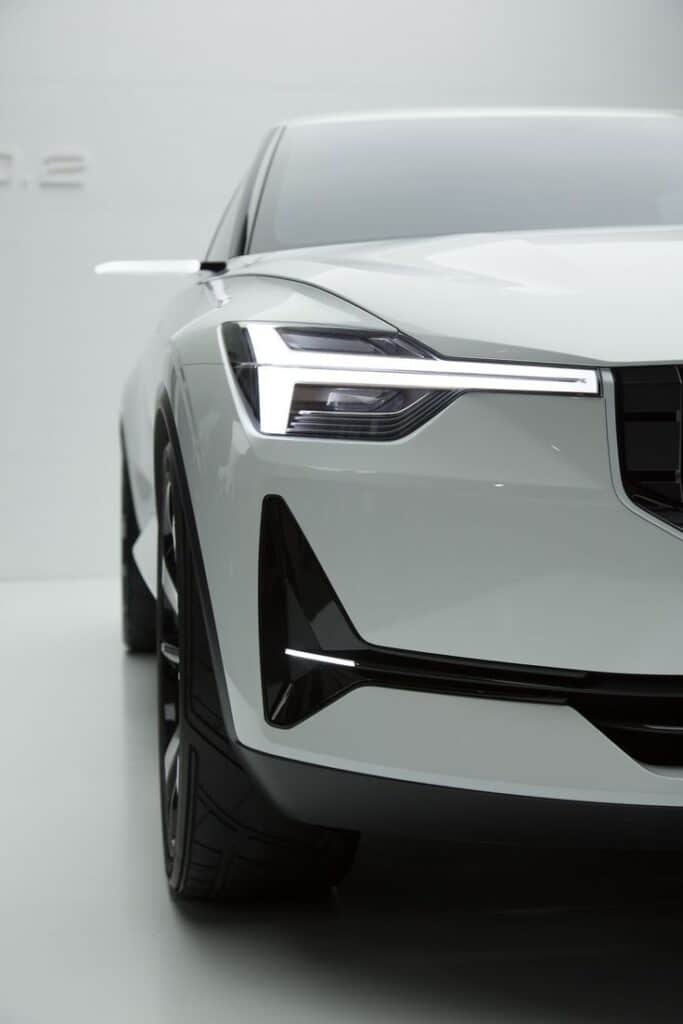
Daytime Running Lights (DRLs) became mandatory in many regions for a good reason. These lights, which automatically turn on when the engine is running, make your vehicle much more visible to pedestrians, cyclists, and other drivers during daylight hours, especially in adverse weather conditions or at dawn and dusk. Studies have shown they significantly reduce accident rates.
The real magic, however, comes with adaptive lighting systems. Forget manually switching between high and low beams; modern systems do it for you. Adaptive Front-lighting Systems (AFS) literally steer the headlights into a turn, illuminating the road ahead as you navigate a bend, rather than just pointing straight forward. Then there are matrix headlights, a game-changer we touched on earlier. These advanced systems use numerous individually controllable LEDs. They can project a high beam that dynamically shades out sections of light where other vehicles are detected, allowing the driver to maintain maximum visibility without dazzling others. This means you get excellent illumination, and the car effectively “draws” darkness around other road users. This kind of precision lighting, especially with features like advanced turn signals that use sequential illumination or unique patterns, is truly rewriting automotive safety. It’s a testament to how intelligent design thinking saves lives every day.
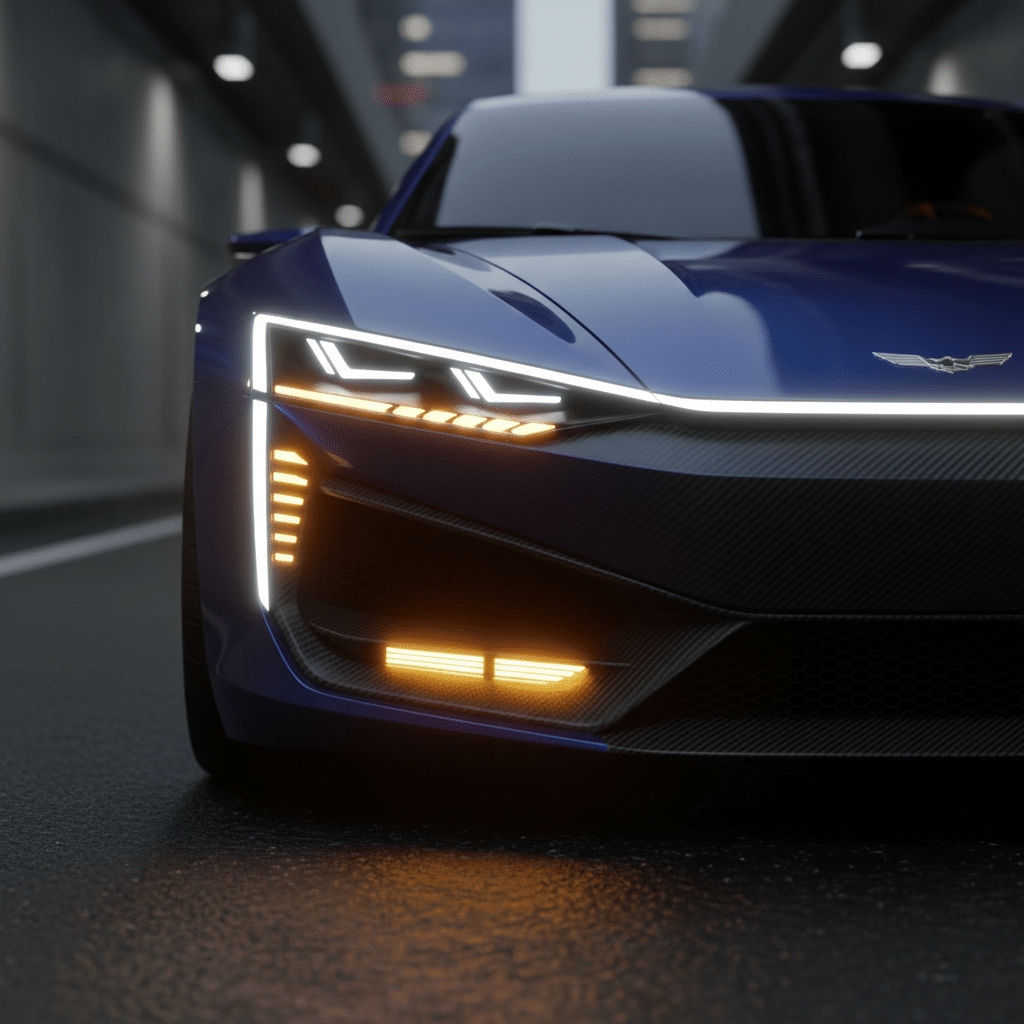
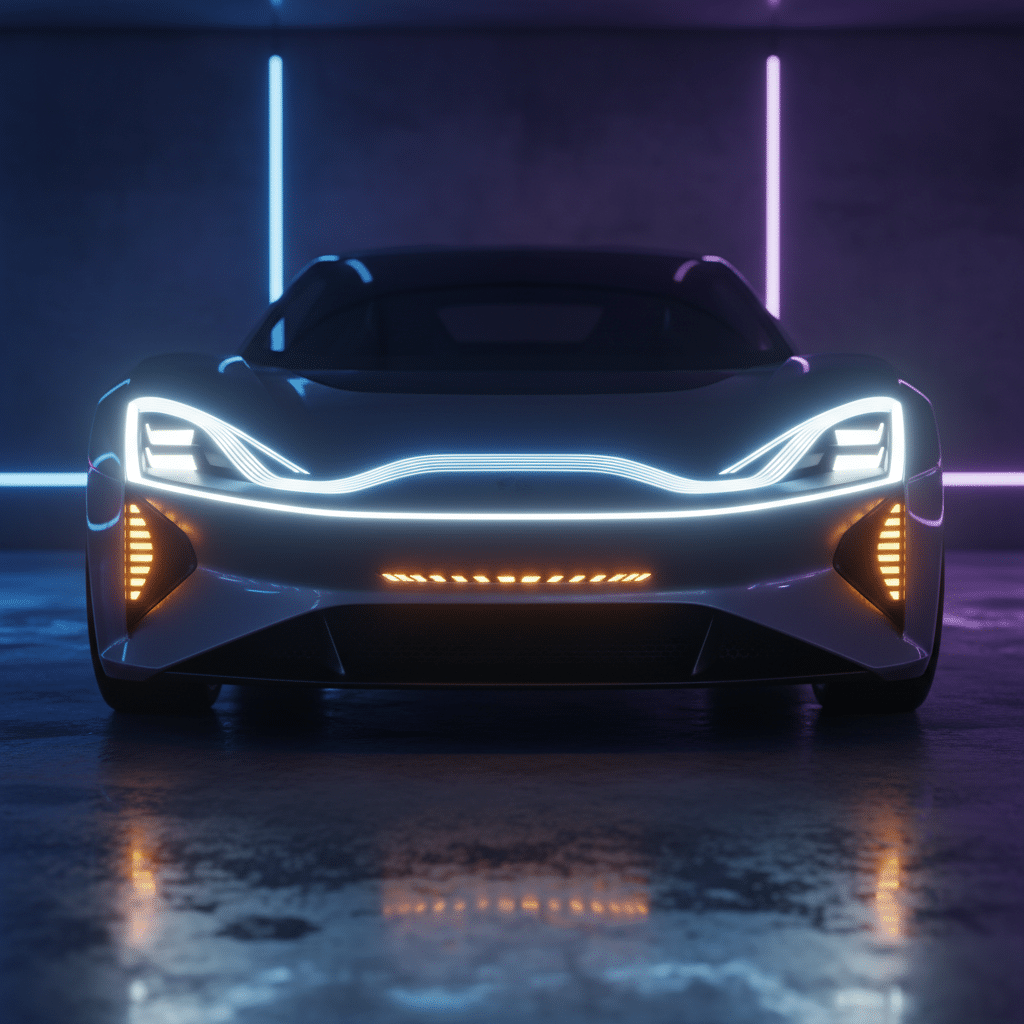
The Art of Illumination: Aesthetic and Brand Identity
While safety is paramount, let’s be honest, the cool factor of automotive lighting design is what often grabs our attention first. Lights are no longer just functional necessities; they’re critical styling elements that infuse a car with character, identity, and a touch of artistic flair. They are, in essence, the “face” and “signature” of a vehicle.
Think about how you recognize a car coming towards you in the dark. Often, it’s not the badge you see first, but the distinctive pattern of its headlights and DRLs. This is no accident. Automotive designers painstakingly craft these “light signatures” to be unique to each brand, and often even to specific models within a brand. BMW’s iconic “angel eyes,” Audi’s sleek LED strips, or Mercedes-Benz’s intricate multi-beam patterns – these are visual identifiers as powerful as any logo. They convey luxury, sportiness, or a futuristic vibe before the car is even fully visible. They give the car its “eyes,” and those eyes are designed to communicate personality.
The rear of a vehicle is equally important. Tail lights have evolved from simple red squares to elaborate, sculpted pieces of “jewellery.” They can be dynamic, sequential, or intricate 3D arrangements that leave a lasting impression as a car drives away. A carefully designed tail light cluster can make a car look wider, more aggressive, or more elegant. It’s a chance for designers to get really creative, using light not just to warn, but to captivate.
Beyond individual light units, the goal is integrated design. Lighting elements are no longer just bolted on; they’re seamlessly integrated into the car’s bodywork, following its lines, emphasizing its curves, and complementing its overall shape. This holistic approach ensures that the lights enhance the car’s aerodynamics and contribute to a cohesive, sophisticated look. It’s about creating a harmonious visual flow, much like when you’re building a home that works for you and your loved ones where every element, from structure to finishes, contributes to the overall desired aesthetic and functionality.
This emotional connection is vital. The way a car is lit can evoke specific feelings. Sharp, angular LED lines might scream “performance” and “aggression,” while softer, flowing light bands could suggest “luxury” and “serenity.” It’s about more than just illumination; it’s about brand storytelling through light. Even interior lighting plays a massive role in the user experience. Ambient lighting, often customizable in color and intensity, creates a specific mood inside the cabin, enhancing comfort and luxury. Dashboard illumination is carefully designed for clarity and minimal distraction, integrating seamlessly with the overall innovative interior concepts of modern vehicles. It’s all part of making the driver feel good, safe, and connected to their ride.
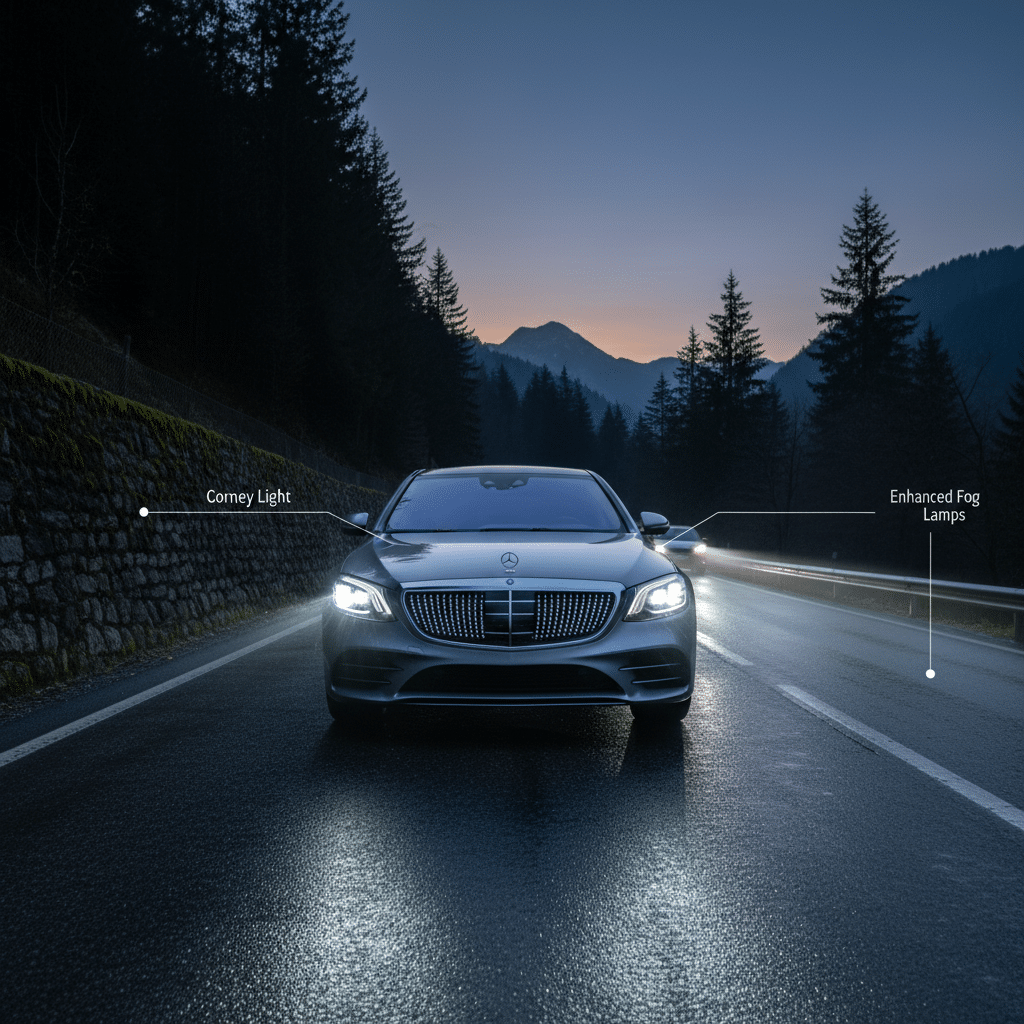
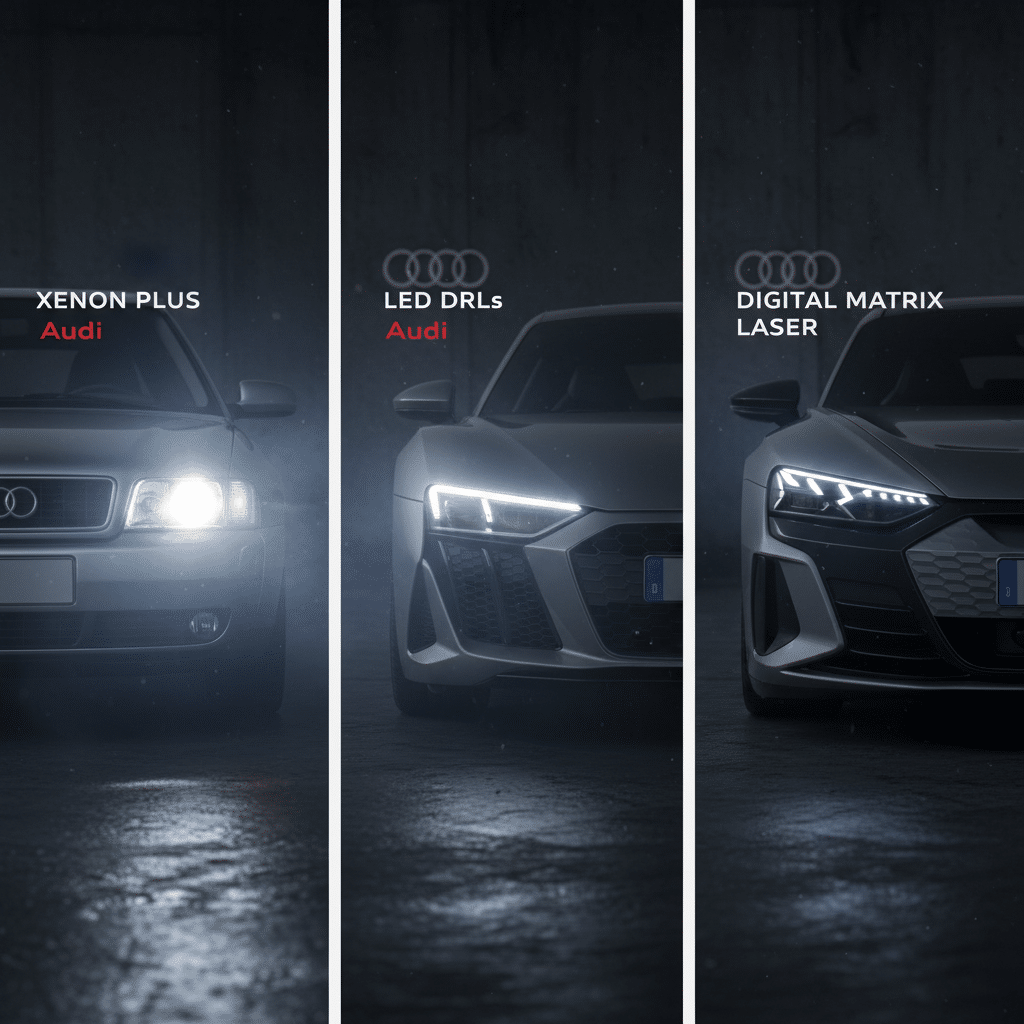
The Tech Behind the Glow: Innovations and Future Trends
The world of automotive lighting is a hotbed of innovation, constantly pushing the boundaries of what’s possible. It’s a fascinating blend of physics, engineering, and design artistry. Let’s delve a bit deeper into some of the most exciting technologies shaping the future of how our cars light up the road.
We’ve already touched upon LED Matrix and Pixel Lights, but their capabilities warrant a closer look. Imagine a headlight with hundreds of tiny, individually controllable LEDs. This isn’t science fiction; it’s here. Each LED can be switched on, off, or dimmed independently. This allows for incredibly precise light distribution. For example, the system can detect an oncoming car and “cut out” a dark tunnel of light around it, preventing glare while still maintaining high-beam illumination everywhere else. It can also project warning symbols onto the road, highlight pedestrians or animals at the roadside, or even adapt its beam pattern to match weather conditions, such as reducing glare in heavy rain. This “smart” illumination truly feels like the car is thinking for you.
OLED (Organic Light Emitting Diode) technology is another exciting frontier, especially for rear lighting. Unlike conventional LEDs, which are point sources, OLEDs are surface emitters, meaning they glow uniformly across their entire surface. They are incredibly thin, lightweight, and flexible, opening up possibilities for unique 3D designs, animated patterns, and dynamic signaling. Imagine tail lights that appear to float, or brake lights that can display messages or animations. Because of their thinness, they can be integrated into curved surfaces, blending seamlessly with the car’s design in ways traditional bulbs or even standard LEDs can’t.
Then there are Laser Headlights. Currently found in some high-end luxury and performance vehicles, laser lights offer an astonishingly long beam range – often double that of LED high beams. They achieve this by using tiny laser diodes that excite a phosphor material, which then emits a bright, white light. While incredibly powerful and energy-efficient, they are also complex and expensive, making them a premium feature for now. Their focused power promises unparalleled nighttime visibility.
Beyond specific hardware, the integration of Smart Lighting with vehicle software and external data is where things get truly futuristic. Imagine lights that communicate with other vehicles (V2V communication) or infrastructure (V2I), sharing information about road conditions, hazards, or traffic flow. Predictive lighting systems could use GPS data and real-time mapping to anticipate curves, hills, or upcoming intersections, adjusting light patterns before you even see the obstacle. Gesture control could allow drivers to adjust interior ambient lighting or even external light patterns with a simple hand movement. Projection lighting, where cars project welcoming patterns onto the ground as you approach, or even warning signals to pedestrians, is already a reality.
Finally, sustainability is becoming an increasingly important factor. The shift to LEDs has already brought massive energy efficiency gains, reducing the load on the car’s electrical system and contributing to better fuel economy or extended EV range. Designers are also considering the materials used in light units, aiming for lighter, more recyclable components. The future of automotive lighting isn’t just about brightness; it’s about intelligence, integration, and environmental responsibility.

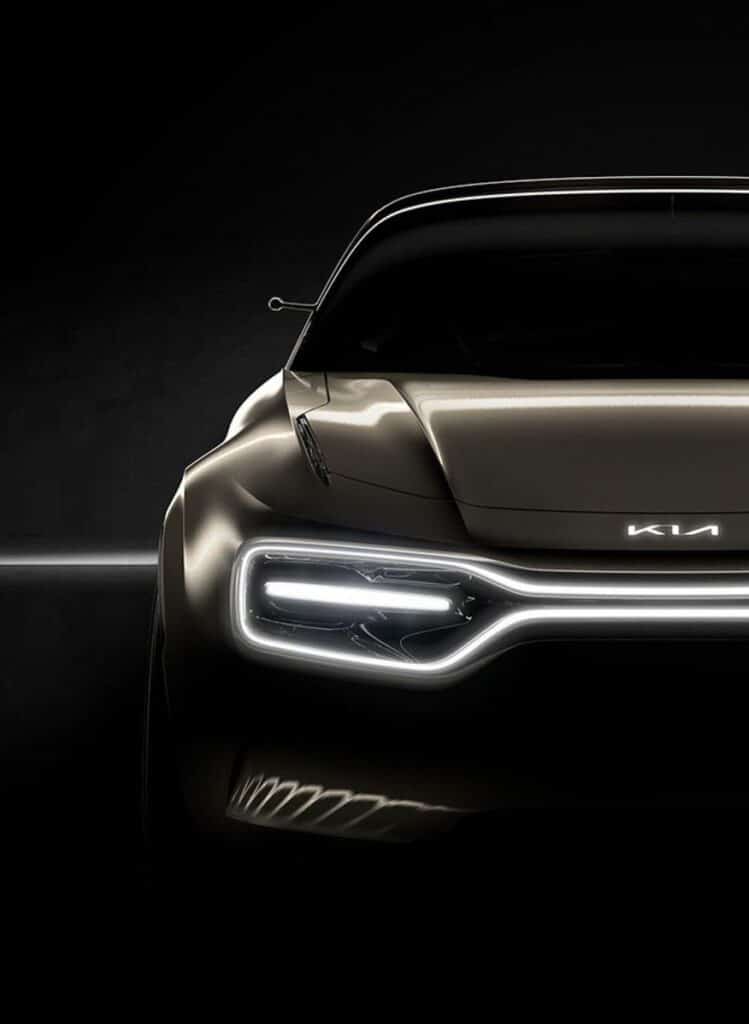
From Sketch to Street: The Design Process
Bringing a new automotive lighting design to life is a complex, multi-stage process that requires close collaboration between designers, engineers, and regulatory experts. It’s a journey from a spark of an idea to a highly functional and beautiful component on a moving vehicle.
It all starts with the concept and sketching phase. This is where designers let their creativity run wild, exploring various shapes, patterns, and visual identities. They’ll sketch out dozens, if not hundreds, of ideas for headlights, tail lights, and DRLs, trying to capture the essence of the vehicle’s brand and overall design theme. This stage is about balancing artistic vision with practical considerations – how will these lights integrate into the car’s body? What message do they convey? Sometimes, inspiration can even come from unexpected places, like the playful forms seen in cartoon car drawing ideas, which can spark unconventional yet appealing design directions.
Once a general direction is chosen, the designs move into digital modeling. Here, 2D sketches are translated into 3D computer-aided design (CAD) models. This allows designers to visualize the lights from every angle, see how they interact with the car’s body, and refine their proportions and details. This is also where the initial engineering constraints start to come into play.
Engineers step in to tackle the technical challenges. Thermal management is a big one for LEDs – they generate heat, and if not properly managed, it can shorten their lifespan or reduce their performance. Designing efficient heat sinks and airflow channels is critical. Packaging is another challenge: where do all the components – the LEDs, lenses, reflectors, control units, wiring – fit within the limited space behind the body panel? There are also strict requirements for light distribution patterns, ensuring the beams are correctly focused and don’t create glare.
Next up is prototyping and testing. Before committing to expensive production tooling, physical prototypes are created. These might be 3D printed models for aesthetic evaluation or functional prototypes with actual lighting elements for performance testing. Virtual simulations are extensively used to predict light output, beam patterns, and aerodynamic effects long before a physical part is made. These simulations help refine the design and catch potential issues early.
Crucially, automotive lighting design isn’t done in a vacuum. It requires constant integration with the overall vehicle design. The lighting team works hand-in-hand with the exterior design team to ensure the lights perfectly complement the car’s styling. They also collaborate with interior designers, as external light signatures often have internal counterparts, such as ambient lighting or illuminated sill plates, creating a cohesive user experience.
And let’s not forget regulatory compliance. Every automotive light must meet stringent safety standards set by governments worldwide (e.g., DOT in the US, ECE in Europe). These regulations dictate everything from light intensity and color to beam patterns and aiming procedures. Designers and engineers must work within these strict guidelines, which can sometimes limit creative freedom but always prioritize safety. It’s a meticulous process, ensuring that the beautiful design you see on the street is also a functional, safe, and legally compliant piece of engineering.
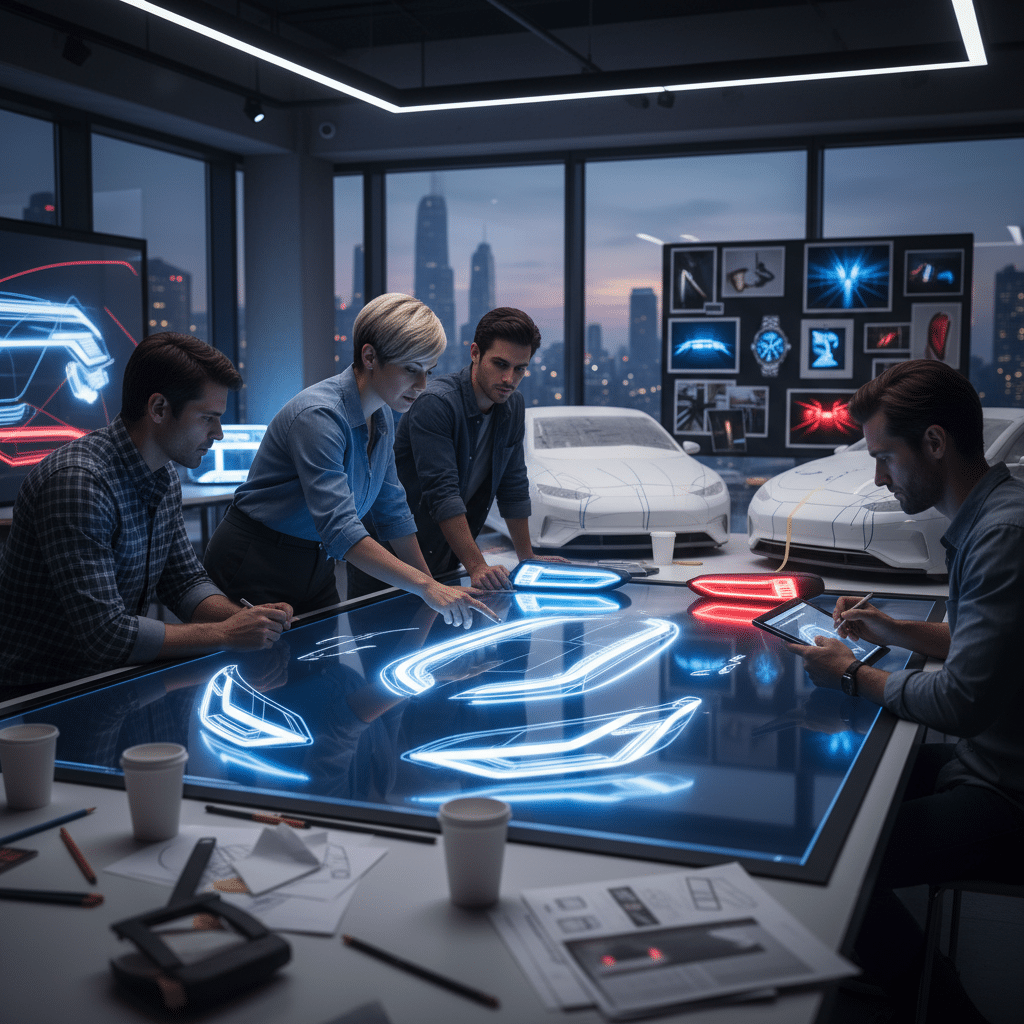
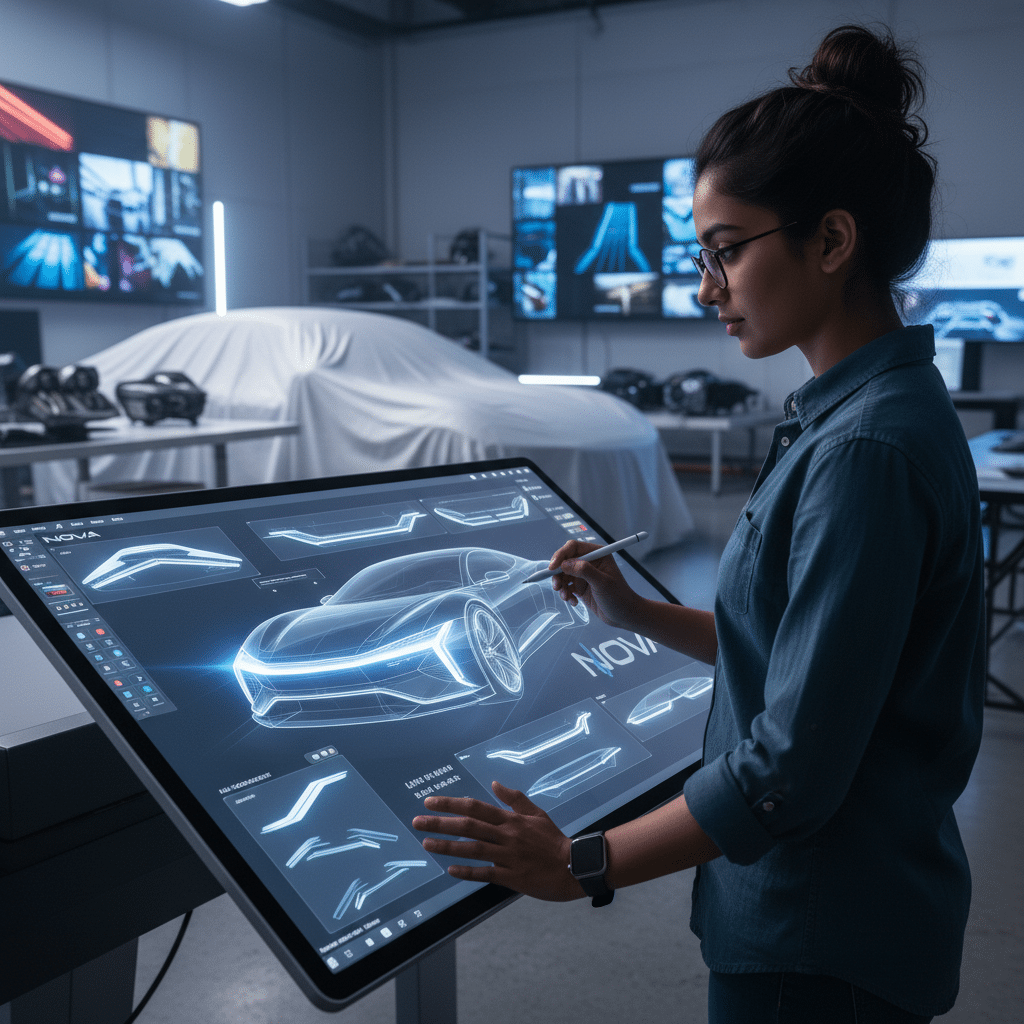
Light Up Your Drive: The Enduring Brilliance of Automotive Lighting Design
From simple incandescent bulbs to intelligent matrix LEDs and futuristic OLEDs, automotive lighting design has undergone a remarkable transformation. What began as a mere necessity for nighttime driving has evolved into a sophisticated blend of safety engineering, artistic expression, and advanced technology. We’ve journeyed through the crucial role lights play in keeping us safe, how they craft a vehicle’s unique identity, the incredible innovations driving their evolution, the meticulous process from concept to concrete, and the essential human factors that shape their ultimate function.
Modern automotive lighting is far more than just illumination. It’s a language, communicating a driver’s intentions, a brand’s ethos, and a car’s character. It enhances safety by improving visibility and reducing glare, and it elevates the driving experience by creating distinctive aesthetics and personalized cabin environments. The challenges of cost, complexity, and heat management are formidable, yet the industry continues to innovate, promising even more intelligent, sustainable, and dazzling light solutions in the years to come.
So, the next time you see a car approaching, or watch one disappear into the distance, take a moment to appreciate the intricate dance of light and shadow, the carefully sculpted forms, and the brilliant technology at play. Automotive lighting design isn’t just about making your ride visible; it’s about lighting up your world, one precise, luminous beam at a time. It’s a silent symphony of safety and style, constantly evolving to make our roads brighter and our vehicles more captivating. Pay attention to the lights on your own ride; they’re telling a story.

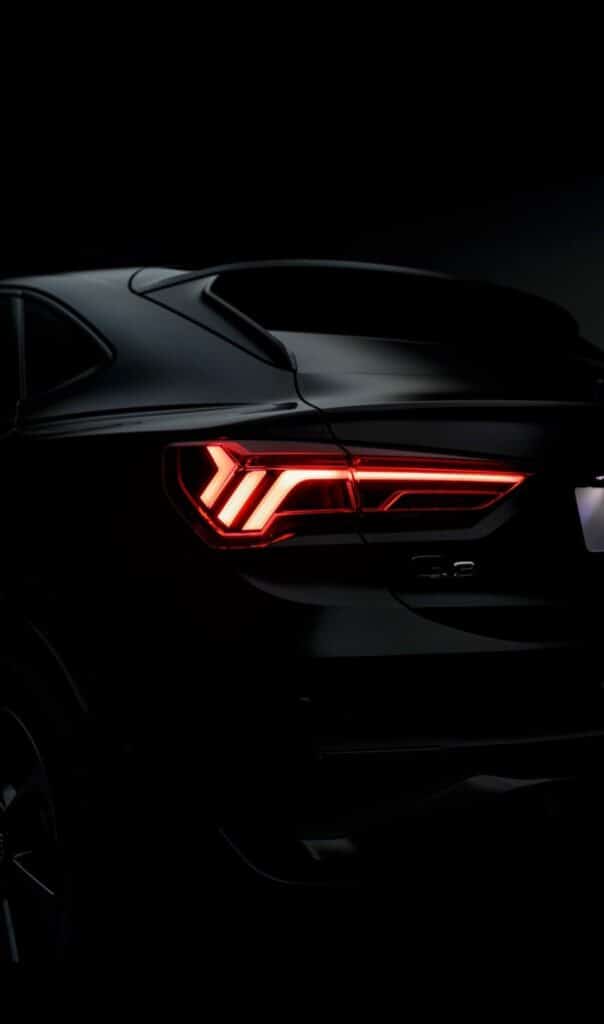
What is automotive lighting design and why is it important?
Automotive lighting design is the art and science of creating vehicle lights that serve both functional and aesthetic purposes, helping to ensure safety, brand identity, and visual appeal. It’s important because it improves visibility, communicates driver intentions, and contributes to a vehicle’s character.
How have automotive lights evolved over time?
Automotive lights have evolved from simple incandescent bulbs to advanced LED, OLED, laser, and matrix systems. Each technological advancement has improved brightness, energy efficiency, safety features, and design flexibility, transforming lights from basic illumination to key elements of vehicle identity.
How does automotive lighting contribute to vehicle safety?
Lights improve safety by ensuring visibility in various conditions, signaling turn intentions, and using advanced systems like adaptive headlights and matrix LEDs to provide high-quality illumination without dazzling others. They also include features like fog lights and DRLs to enhance safety in specific scenarios.
What are some future trends in automotive lighting technology?
Future trends include smart, adaptive, and connected lighting systems like OLEDs and laser headlights, which offer dynamic, personalized, and highly precise illumination. Integration with vehicle software and external data, along with sustainability efforts, will continue to push innovations in automotive lighting.
In what ways do automotive lights serve aesthetic and brand identity purposes?
Lights help define a vehicle’s personality through distinctive signatures, shapes, and lighting patterns, acting as visual identifiers for brands. They also enhance overall design by seamlessly integrating into the car’s exterior, creating a stylish and harmonious appearance.
- 13shares
- Facebook0
- Pinterest13
- Twitter0

